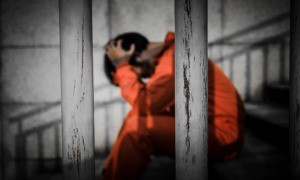***Members of Congress are home campaigning, so, of course, no news out of Washington on the Juvenile Justice and Delinquency Prevention Act. The conventional wisdom here is that reauthorization during the lame duck session between November and January is a long shot. The Senate could attach its version of the act pretty easily to some other legislation and get it to the Senate floor, some observers believe, but the House does not even have a real reauthorization bill in committee. Rep. George Miller (D-Calif.) holds all the cards on that side of the building, and nobody we have spoken with can get a good explanation from his office about what the hold up is.
***A new piece of legislation, called the Family Justice Act, was introduced by Rep. Carolyn McCarthy (D-N.Y.) in late September. The bill would provide demonstration grants to some systems that are willing to increase community and family presence at juvenile facilities, and establish a community monitoring panel that could make recommendations on changes at facilities. Pretty unlikely that a new bill would move anytime soon, but expect some supporters to try and sell the Obama administration on including this concept in its fiscal 2011 program plan for OJJDP.
***The National Academy of Sciences committee on juvenile justice met this week for its second round of two-day panel discussions, which the committee then discusses in closed sessions. Click here for a rundown of the agenda for round two.
The first meeting in August focused on the activities of OJJDP and its relationship with states, as well as recent legislative developments in the field. This time, the subject was reform efforts on the state level, with a particular focus on the issue of disproportionate minority contact (DMC).
The language on the committee’s website spells out a precise mission: “assess the impact of the Juvenile Justice and Delinquency Prevention Act (JJDP Act) of 1974 and its four core requirements on juvenile justice policies and practices.” But from what we hear, the committee does not intend to limit itself to the act and the core requirements. It is, however, debating whether to hone in on “juvenile justice” as opposed to the wider world of activity that constitutes “delinquency prevention.”
Two issues the committee is expected to address in whatever final product it issues, we are told, are DMC and the role of emerging science on adolescent brain development in juvenile justice policy.
***Luzerne Update! The state appears to be on the brink of passing significant reforms in the wake of the 2008 Luzerne County scandal, which involved two judges getting kickbacks for helping to open (and then fill) a private juvenile detention center. Chief among those changes will be a mandate that every juvenile defendant be provided legal counsel. Many of the youths committed to the Luzerne facilities were adjudicated without having any counsel.
Luzerne County, by the way, did not wait for the reform to pass; it has already created a juvenile division of its public defender’s office, and every juvenile is represented by a lawyer in court.
For two good reads on the latest developments, check out Michael Sisak’s article in the Standard-Speaker and Terrie-Morgan Besecker’s piece in the Times-Leader (both newspapers serve the Luzerne County area of Pennsylvania).
Morgan-Besecker included a chart showing the changes in juvenile court activity since 2009, when judge Mark Lupas replaced accused judge Mark Ciavarella in the juvenile courtroom:
2005 to 2008 (Ciavarella’s last three years in juvenile court): more than 500 juvenile cases heard by the court each year, more than 200 commitments to residential placements each year.
2009: 343 juvenile cases, 32 commitments to residential placements.
2010 so far: 237 cases, 21 placements.
The drop from 200 placements a year to 32 is explained easily enough: there was a judge without an alleged financial motive for detaining kids on the job. But the drop in new cases? It could just be a general downward trend in juvenile crime and arrests. But it’s more likely that the newly reformed Luzerne court no longer endorses Ciavarella’s philosophy that minor transgressions on school grounds warrant a trip to the police station, or juvenile court.
Morgan-Besecker includes a quote from State Rep. Phyllis Mundy (D), who told the Juvenile Court Judges Commission about why she chose not to interfere with Ciavarella’s court even though she heard years ago about his proclivity for lock-up.
“I had no personal knowledge of corruption. I was just told the judge was tough on crime,” Mundy told the commission. “What else should I have done?”
That comment echoes the actions of the Pennsylvania Supreme Court at the outset of this scandal. When evidence of Ciavarella’s “toughness” was presented to them by the Juvenile Law Center, the court declined to get involved. After a federal grand jury indicted Ciavarella and his President Judge, Michael Conahan? The court agreed to take the center’s case.
Translation: If Ciavarella’s only alleged misconduct was absurdly and unreasonably detaining youth, he’d still be on the bench today. In a strange way, it’s almost fortunate he allegedly took money for it.
***These are a few stories on JJ budget issues that are telling about the fiscal strains at the county level in some states:
In Kitsap County, Wash., a drop in sales tax revenue has forced cuts in both juvenile and adult corrections. One of the county’s four detention center pods already has been mothballed, and another pod could be shut down soon. In Stark County, Ohio, two of the three units at the Stark Attention Center will be shuttered.
The cost savings expected in both counties from these moves is less than $1 million, which shows how impossible it still is for some counties to borrow or deficit spend. Both moves could result in the counties making better (or at least more thoughtful) decisions about which juveniles should be detained. Both moves could also lead, however, to appropriately detained juveniles being placed further away from their families.
Then there is the game of chicken being played with juvenile detention in Manitowoc County, Wis. As Herald-Times reporter Emily Ann Holman reports, County Executive Bob Ziegelbauer is prepared to shut down the county detention center and lay off 30 of its employees if the union doesn’t accept a new agreement that lowers expenses at the center by 2 percent.
Usually, the county could make that threat with the knowledge that it could make a deal for bed space with a nearby county that has a detention center. But Manitowoc’s agreement with the AFSCME Sheriff’s Department Local prohibits the county from subcontracting with another county while workers are laid off, according to Holman. That means that if Ziegelbauer actually closes the facility, the county will be hard-pressed to find a place to detain juveniles.





























